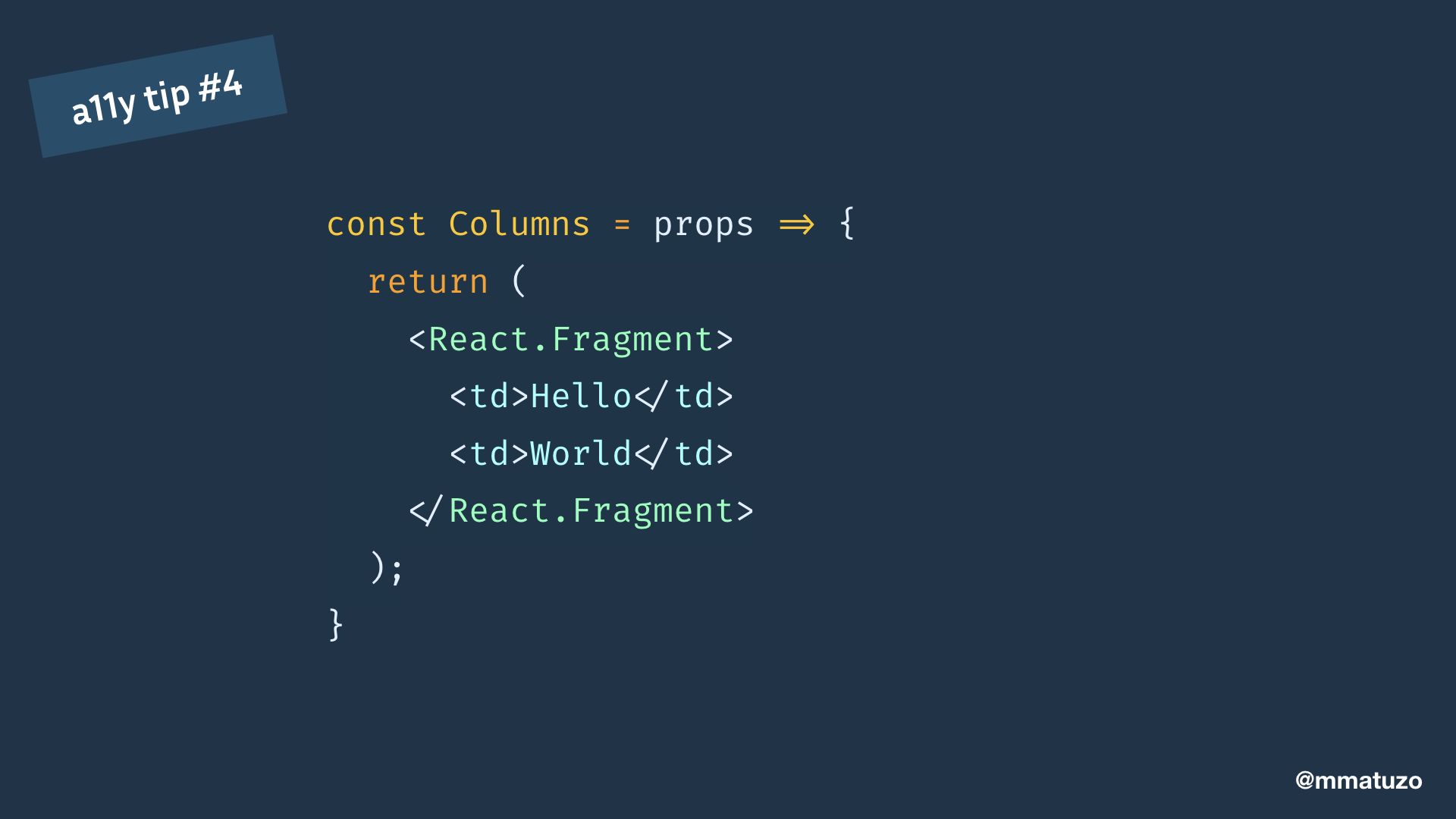

Shorter syntax of react fragment not working code#
However, when you use a Fragment, you can group multiple elements together without creating an extra DOM node.įor example, consider the following code without using Fragments: When you return multiple elements from a component, React will usually expect you to wrap them in a parent element. How Fragments workįragments work by allowing you to return multiple elements from a component without having to wrap them in a single parent element. You can use Fragments to group multiple children elements and render them together without creating an additional wrapper element. Fragments are a lightweight and efficient way to group multiple elements without adding an additional parent element to the DOM tree. In React, a Fragment is a component that lets you group a list of children elements without creating an extra DOM node. Compatibility with Higher-Order Components.or enforcing certain Design System in the codebase (e.g standardized or. This is meant to provide a centralized way to format common tags such as. defaultRichTextElements Ī map of tag to rich text formatting function. This wraps the output in a single React.Fragment to suppress that.

When formatting rich text message, the output we produced is of type Array, which will trigger key error. By default, warning messages are logged using console.warning if NODE_ENV is not set to production. onWarn Īllows the user to provide a custom warning handler. By default, error messages are logged using console.error if NODE_ENV is not set to production. onError Īllows the user to provide a custom error handler. Before V3, span was used instead check the migration guide for more info. Provides a way to configure the default wrapper for React Intl's components. Without defaultLocale and/or if it's set incorrectly, you might run into scenario where a sentence is in English but embedded date/time is in Spanish. defaultLocale should be the locale that defaultMessages are declared in so that a sentence is coherent in a single locale. defaultLocale and defaultFormats ĭefault locale & formats for when a message is not translated (missing from messages). Notice how there is no defaultMessages, that's because each Message Descriptor provides a defaultMessage. While defaultLocale and defaultFormats are for fallbacks or during development and represent the app's default. The user's current locale and what the app should be rendered in. This is the same concept as what Flux frameworks like Redux use to provide access to a store within a component tree. This allows configuration like the current locale and set of translated strings/messages to be provided at the root of a component tree and made available to the components. React Intl uses the provider pattern to scope an i18n context to a tree of components. Implement advanced features like 's updating over time.Support rich-text string/message formatting in.Render React elements that seamlessly compose with other React components.Why Components? īeyond providing an idiomatic-React way of integrating internationalization into a React app, and the components have benefits over always using the imperative API directly: The components render React elements by building on React Intl's imperative API. React Intl has a set of React components that provide a declarative way to setup an i18n context and format dates, numbers, and strings for display in a web UI.


 0 kommentar(er)
0 kommentar(er)
